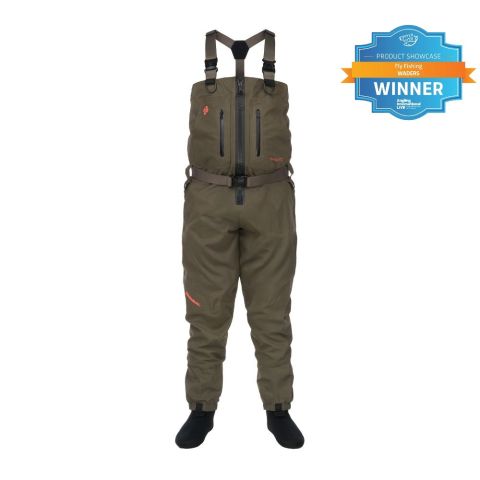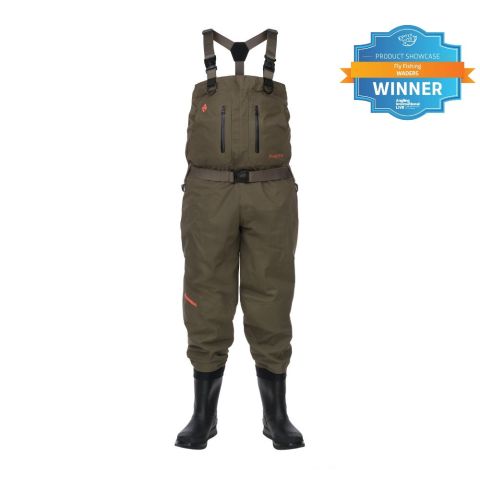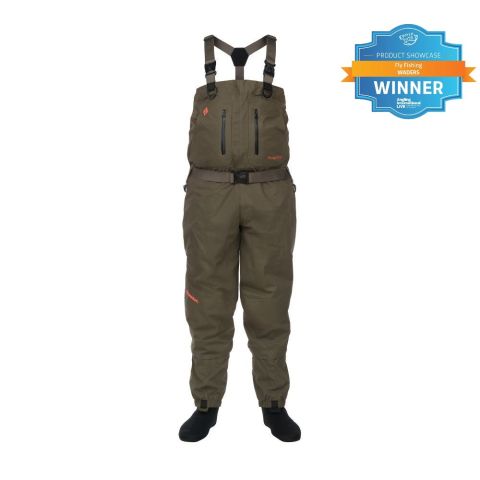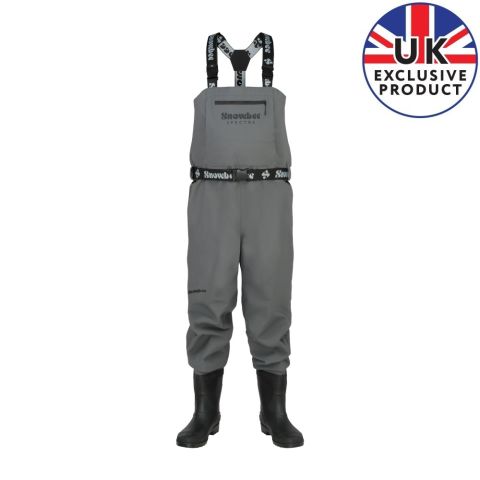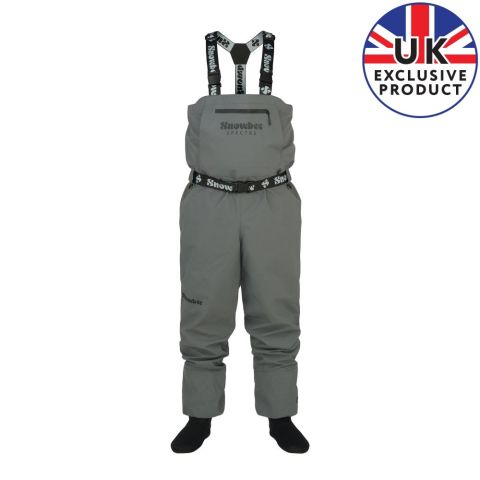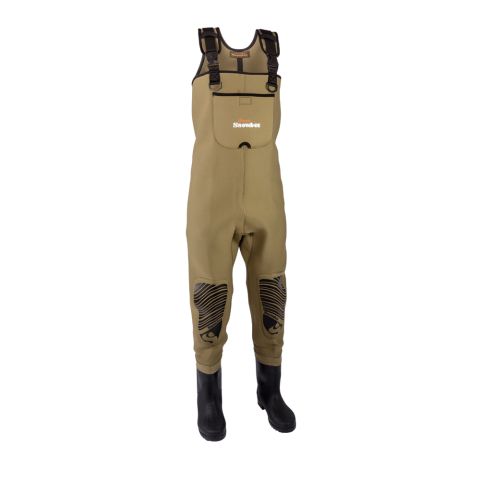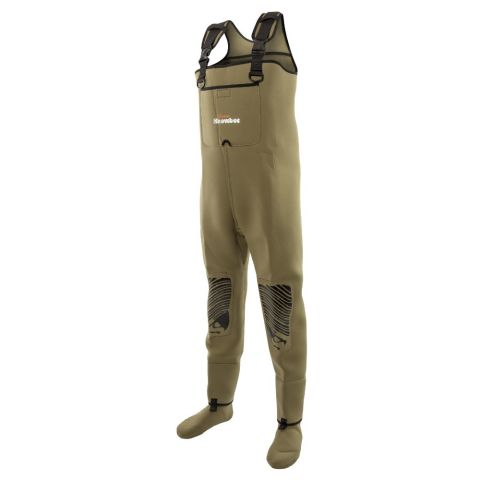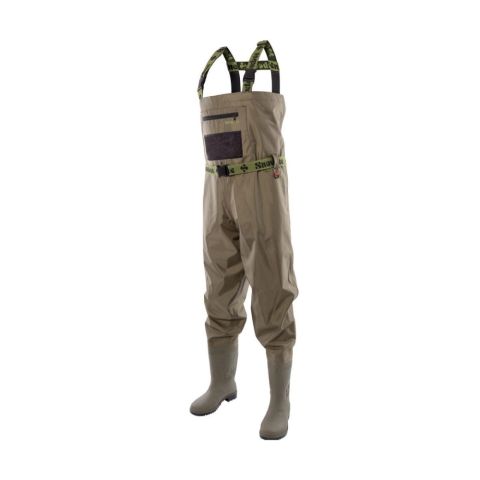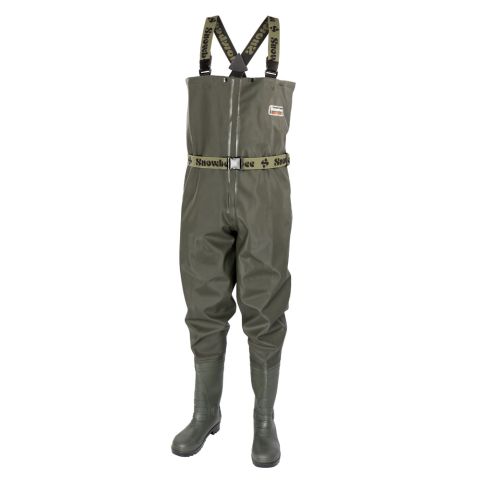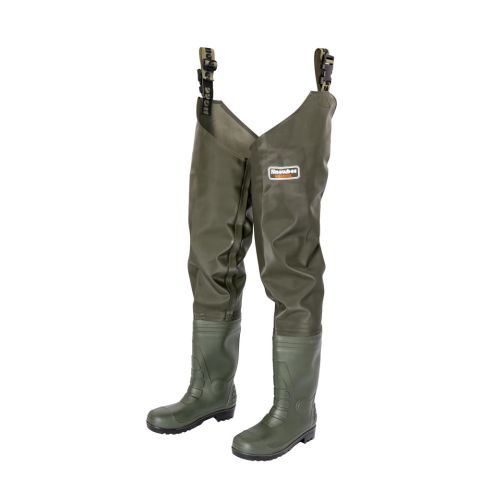When it comes to fly fishing, few pieces of equipment are as essential as a reliable pair of waders. Whether you’re fishing rivers, lakes or saltwater estuaries, the right waders keep you dry, comfortable and allow you to maintain focus on the important thing – catching fish.
At Snowbee, we’ve been designing high-performance waders since the 1980s from our premises in Devon, England, blending modern materials with practical angling experience. Indeed, we have won many awards – such as Best New Product at EFTTEX for our Prestige STX2 breathable models (2025) – and have some offerings which have had near-zero returns in almost a decade.
This guide answers the most common questions anglers ask about waders, while showing how our innovations – from advanced fabrics to ergonomic design – make a difference on the water.
What is a wader and what is the point in them?
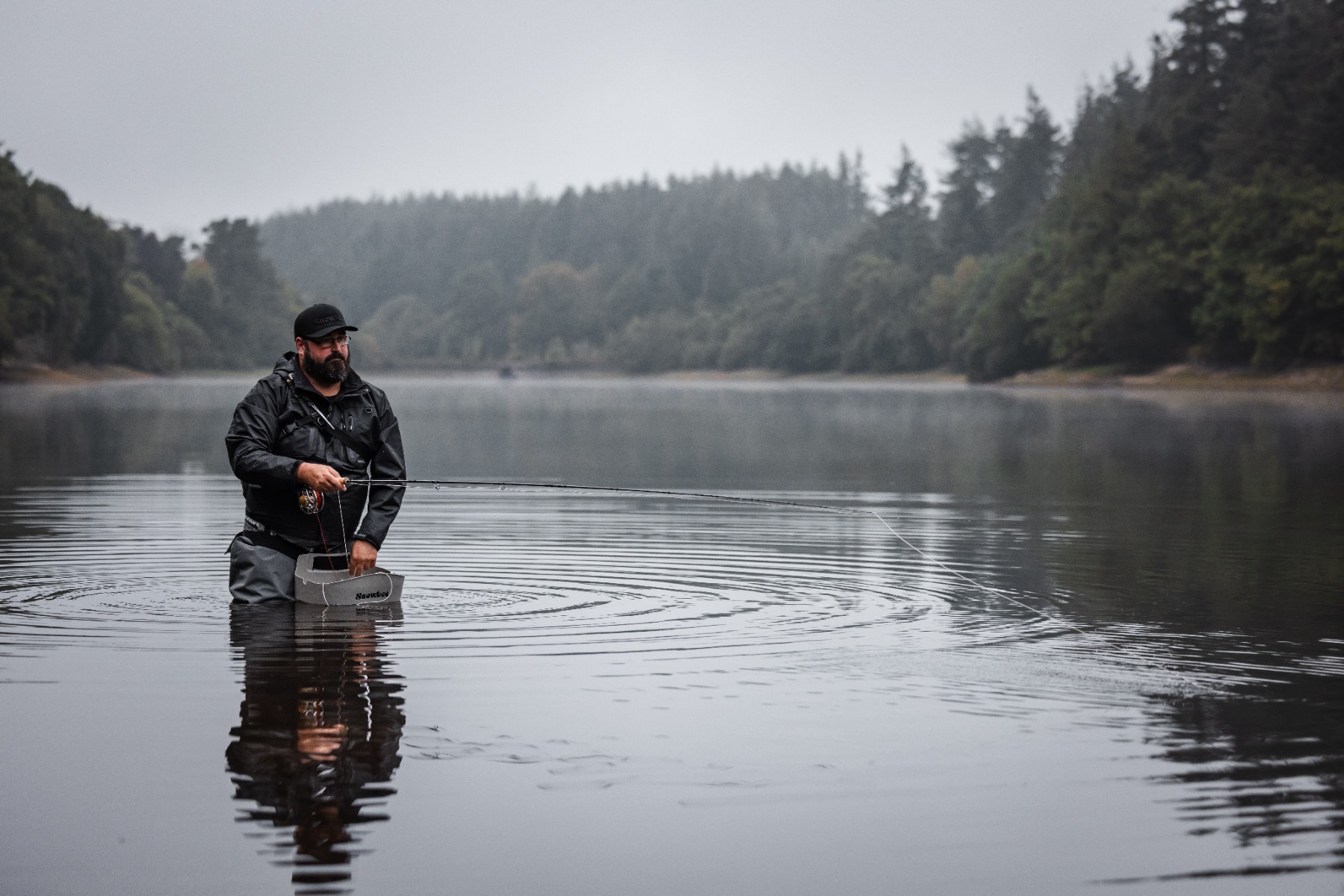
For those new to fishing, a wader is a waterproof garment, usually chest- or waist-height, that allows anglers to stand in water without getting wet. The point is simple: waders extend one’s fishing range dramatically. Instead of being limited to the bank and out of range of fish, you can step into rivers, streams, and lakes, accessing better casting positions and reaching feeding fish while remaining completely dry (unless you fall in).
All of our waders, from the flagship Prestige STX2 Breathable Waders to our essential Granite PVC Waders are designed with anglers in mind, balancing waterproofing, comfort and durability for a competitive price.
When to wear waders?
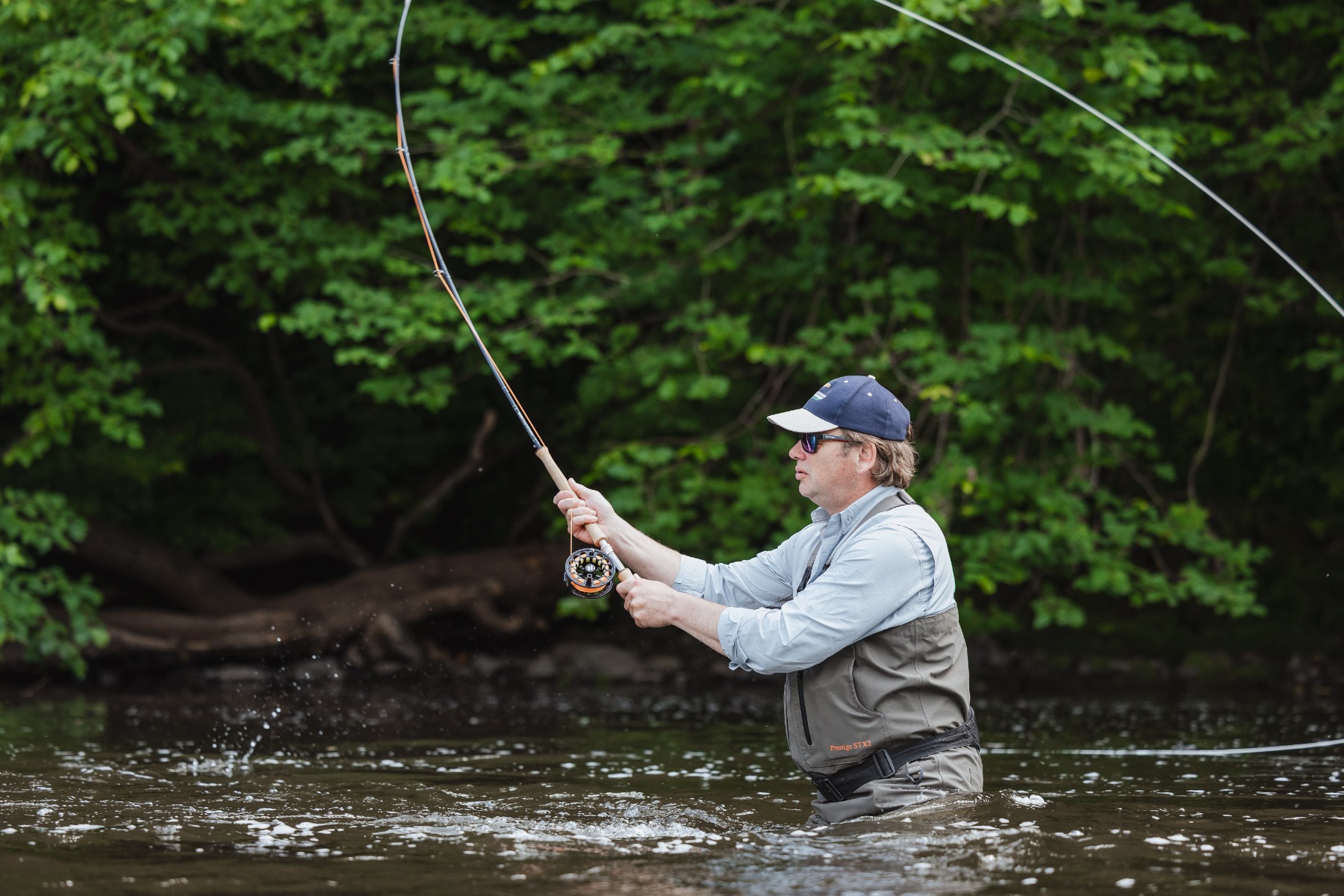
You should wear waders whenever you expect to enter the water beyond your boots. Common situations include:
- River fishing for trout and grayling
- Stillwater fishing when wading out improves casting distance
- Saltwater fly fishing where tidal flats demand waterproof protection
- Very wet and rainy days
- When you plan to spend all day in the water fishing or working
Even in summer, the majority of anglers in the UK will wear waders. When paired with the correct clothing underneath to wick sweat away, they remain the most comfortable option and offer added protection from rocks, foliage, underwater snags etc.
TIP: Wear thermal layers, like our Graphene Thermal Jacket on the inside of your waders, but all waterproof coats or jackets over the top of your waders. This is because when water beads from rain on your waterproof coat, especially with a DWR coating, this will run down the jacket and into your waders if worn on the inside.
How long do waders typically last?
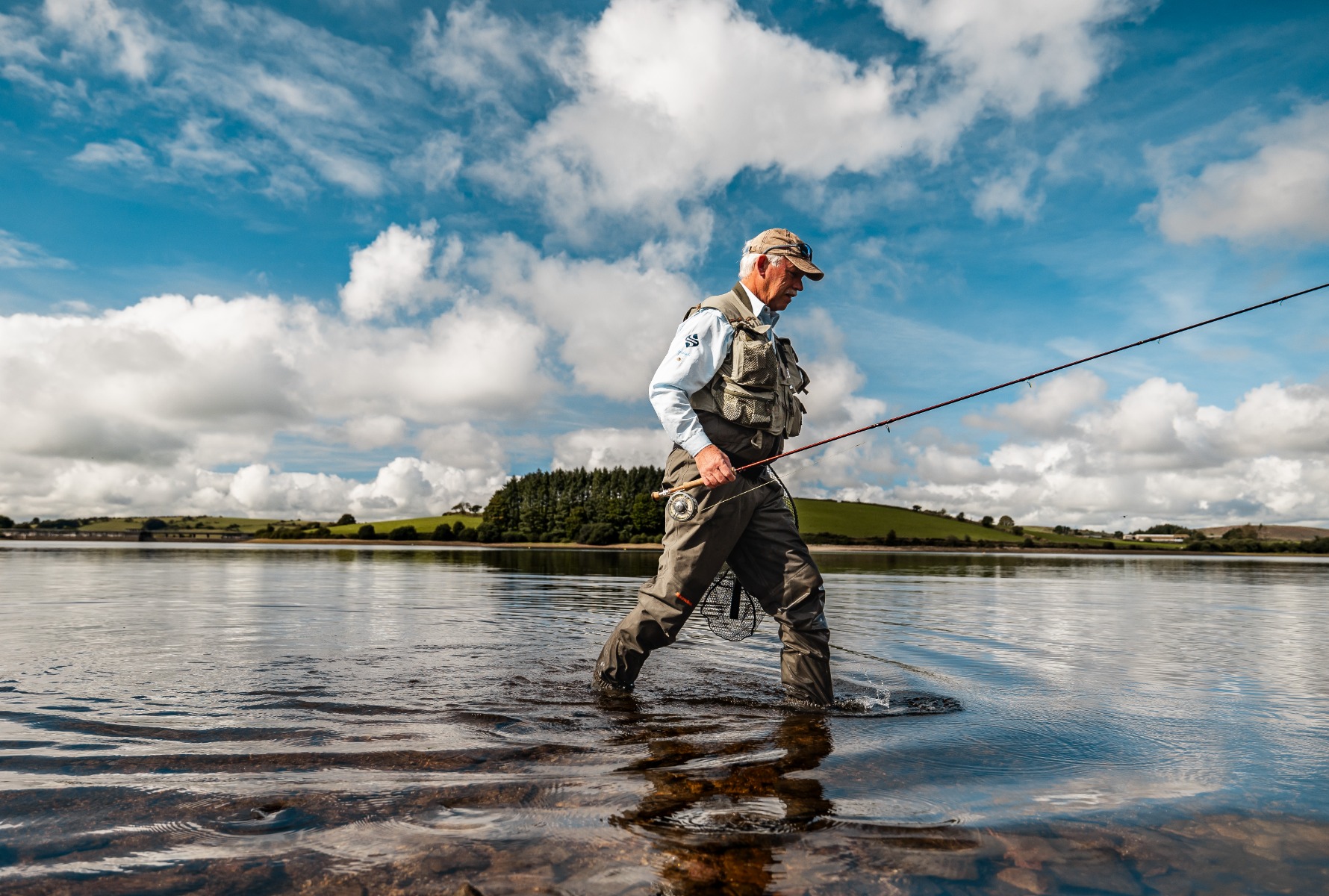
With proper care, high-quality waders should last 3–5 seasons of regular fishing. Longevity depends on:
- Materials – breathable fabrics vs. neoprene
- Frequency of use – weekend vs. daily angler
- Care & maintenance – rinsing after saltwater, drying properly
Snowbee’s waders use multi-layer breathable fabrics with reinforced knees and seat panels, extending life even under hard use.
Punctures do happen to many waders, and with repair kits one can significantly patch, repair and extend the life of their waders.
At what temperature do you need waders?
There’s no strict rule, and generally breathable waders are worn year-round.
- Above 18°C (65°F): Breathable waders are a must with lightweight, moisture-wicking layers underneath. Most suspected ‘leaks’ are actually caused by sweat, even in breathable waders, so the right clothing underneath is very important.
- 10–18°C (50–65°F): Breathable waders, PVC waders and Nylon waders with lightweight base layers will be fine.
- Below 10°C (50°F): Insulated neoprene waders or breathable waders with thermal underlayers are optimal.
Snowbee’s breathable range keeps you comfortable across seasons, while our 4mm Neoprene Waders excel in cold conditions.
Are waders 100% waterproof?
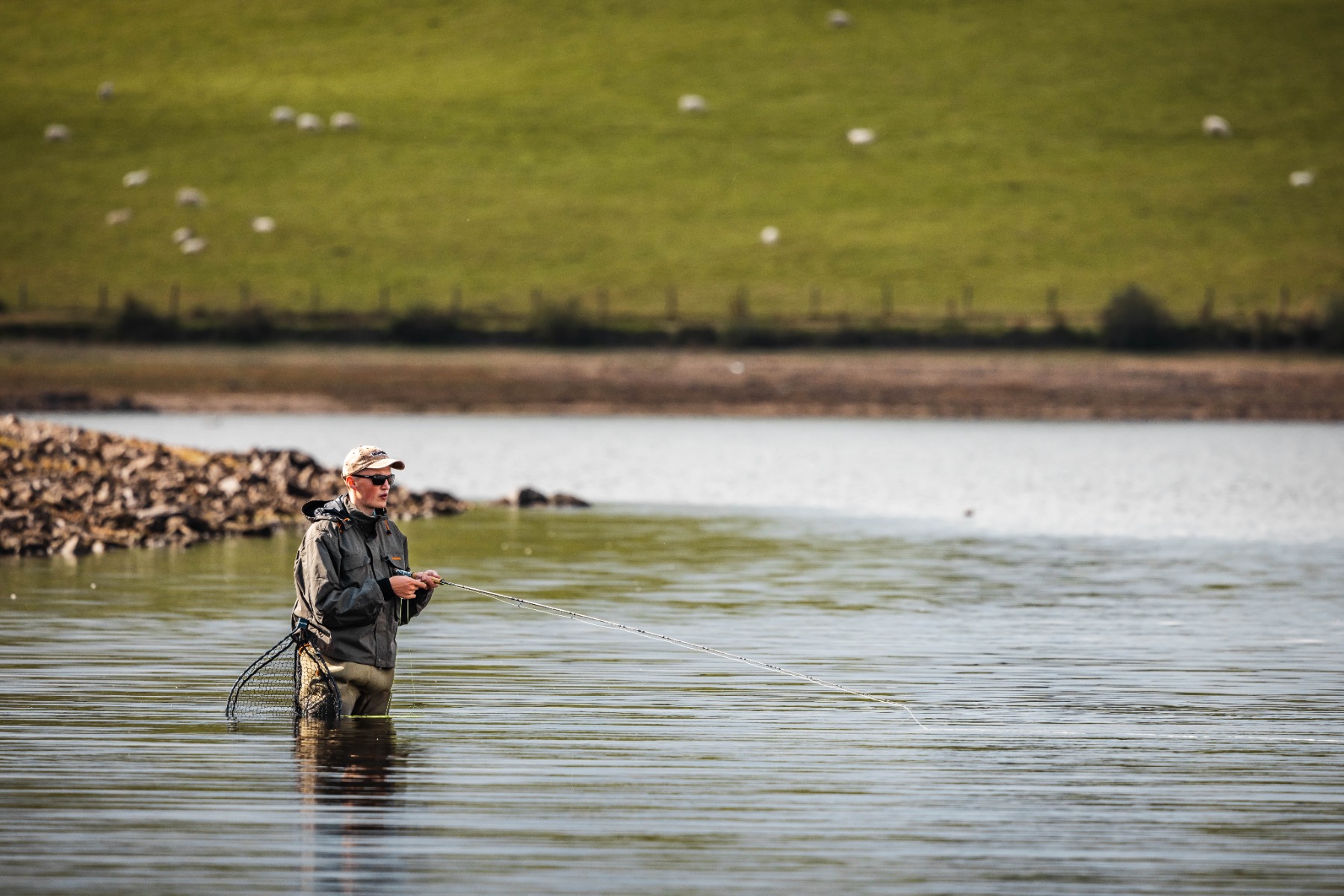
Yes – waders are designed to be 100% waterproof. However, cheaper options can leak at seams or weak points. Snowbee uses a range of taped seams, reinforced knees and waterproof breathable membranes to ensure total protection. Our Granite PVC and Wadermaster Nylon are incredibly hardy. Like any technical garment using expensive breathable materials, punctures or wear can cause leaks over time, but with proper care (and repair kits), performance can be maintained for years.
What to wear under waders?
Layering is key:
- Warm weather: Lightweight, moisture-wicking synthetic base layers
- Cold weather: Thermal leggings or fleece layers.
Avoid jeans or cotton – they absorb water and become uncomfortable. At Snowbee, we design our waders with enough room to accommodate layered clothing on even the coldest of days without restricting movement.
What to know before buying waders?
Before investing, consider:
- Material – breathable vs. neoprene, PVC or nylon.
- Fit – chest, waist or thigh waders.
- Durability – reinforced panels for rough terrain.
- Boot style – stockingfoot (with separate boots – highly versatile) vs. bootfoot (integrated boots – easier to get on and take off).
- Sole – felt, cleated rubber, studded etc – each offers different benefits.
- Your fishing style — small streams vs. deep rivers vs. saltwater.
Snowbee offers both stockingfoot and bootfoot options, so you can choose what suits your waters best.
Should waders be baggy or tight?
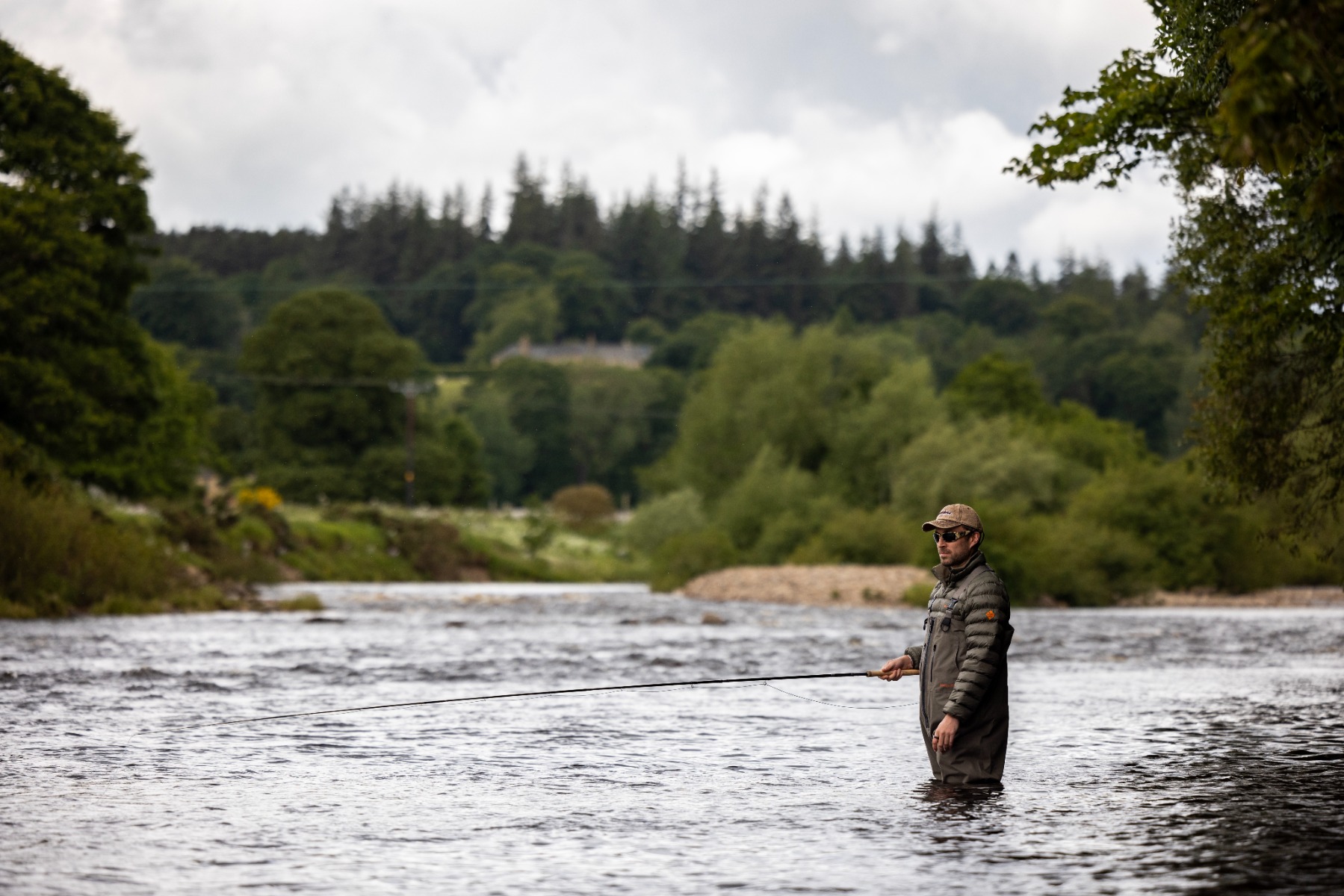
Neither. Waders should fit comfortably, allowing freedom of movement with layers underneath without excess bagginess. Too tight, and one will stress seams, leading to faster leaks. Snowbee’s ergonomic designs are cut for anglers – roomy enough for layers, but streamlined to prevent excess drag in water.
Read our guide for choosing the right waders HERE
How do I know what size waders I am?
Always refer to the manufacturer’s sizing chart. Snowbee provides detailed charts with chest, waist, inseam and boot sizes. When in doubt, size up slightly if you plan to fish in cold weather. Try on with the socks or boots you intend to wear for the most accurate fit.
View our wader size charts for more information, HERE
How to choose a wading boot?

Wading boots provide traction and support while traversing the slipper, bouldery surfaces you will encounter. Consider:
- Sole type – felt for grip on slimy rocks, rubber for durability and legal compliance in some regions.
- Bootfoot or stockingfoot – Stockingfoot waders offer versatility, sure-footedness and comfort but more cost overall. Bootfoot models are restricted to the sole type purchased, and often don’t accommodate studs.
- Ankle support – essential for rough terrain.
- Drainage – boots should release water quickly through vents and specialist materials to stay light.
- 100% waterproof breathable fabric
- Reinforced high-wear areas
- Adjustable Y-shape braces with belt for comfort
- Designed for serious fly anglers who demand performance
What are the best waders for fly fishing?
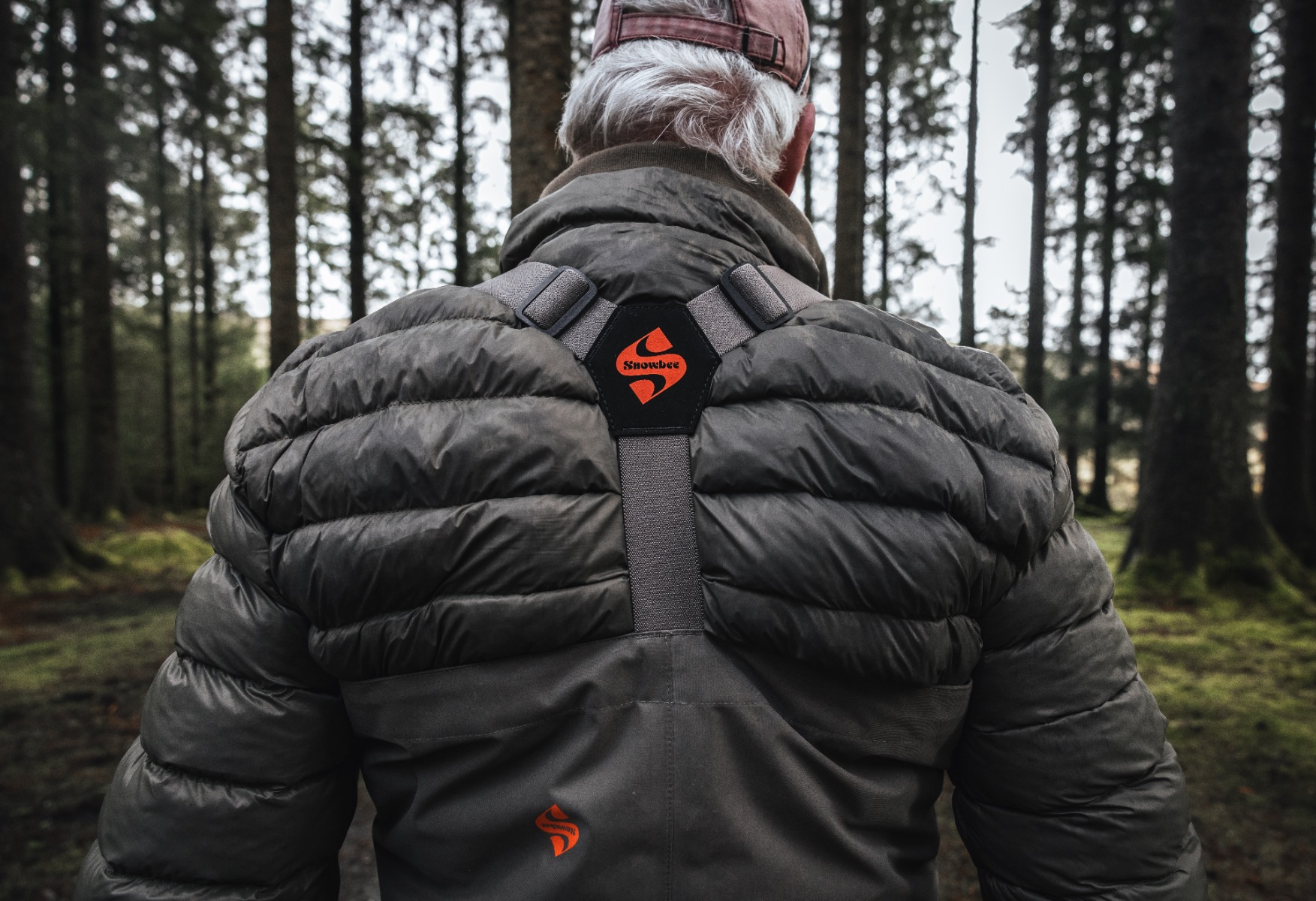
The “best” depends on your fishing style, but for all-round versatility, breathable stockingfoot waders paired with quality wading boots are the go-to for most fly anglers. Snowbee’s Prestige STX2 Breathable Waders are a top choice, offering:
For cold winter fishing, Snowbee’s Neoprene Waders provide insulation and durability. And for an essential wader, the Granite PVC Waders is a best-selling option for under £100.
Final Thoughts
A good pair of waders opens up new possibilities in fly fishing, giving you freedom, comfort, and protection. At Snowbee, we combine decades of angling expertise with cutting-edge fabric technologies to produce waders trusted by fly fishers worldwide.
Whether you’re stepping into your first river or upgrading to professional-grade gear, Snowbee has a solution that will keep you dry – and focused on the fish.

